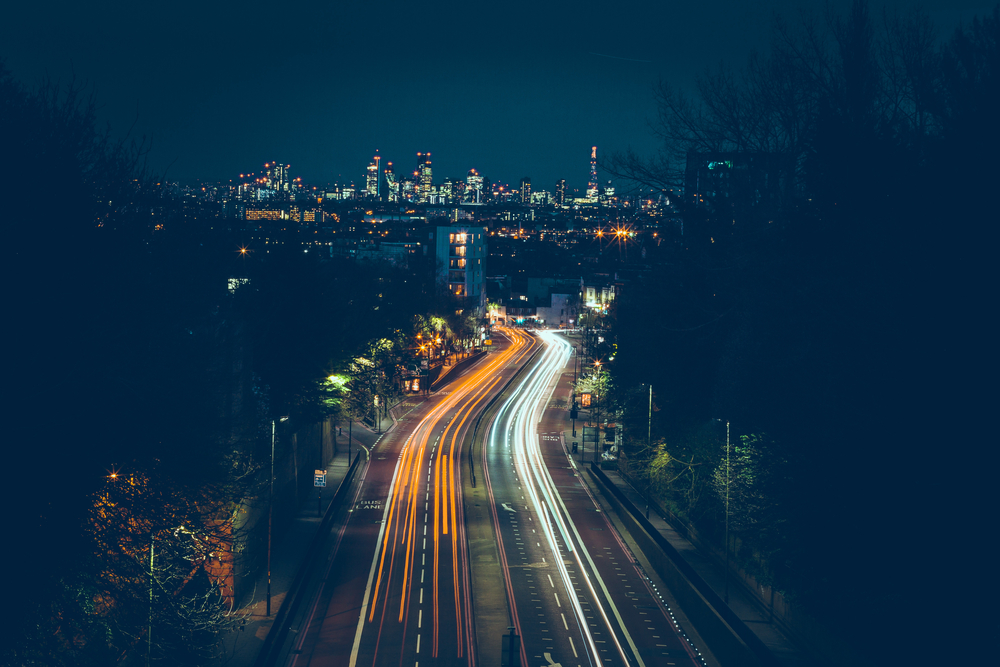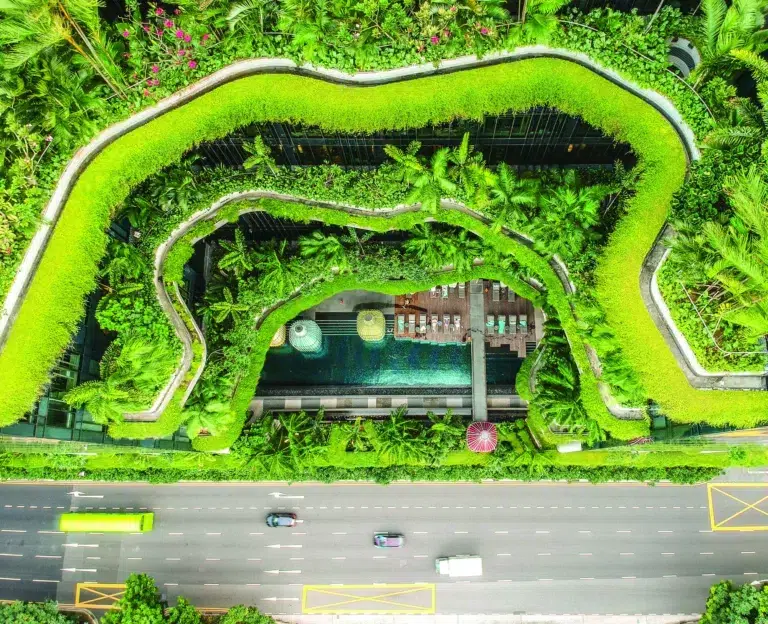A future like Wakanda: Why big cities should embrace and build on their past
This article is based on former ambassador to ADB Curtis S. Chin’s keynote at the PropertyGuru Asia Real Estate Summit originally presented on 8 December 2021.
Making Asian cities highly sustainable in the future is all about balance

‘Black Panther’ is a futuristic film set in Africa hundreds of decades into the future focused on a mythical city called Wakanda. I would compare this fictional city to Singapore, where I spent most of my time pre-pandemic.
Like Wakanda, the world’s best cities should embrace and build on their past. Whether it’s fictional Wakanda or a very real Singapore, there are lessons that we can take from stories that we might read about in books or watch on screen.
Singapore can be a showcase of what future cities can be — that city state’s dazzling skyline and infrastructure are still the envy of other urban areas across the region.
As we think about Singapore and other cities across Asia, what are some of the lessons that we should be able to take to heart?
Communities underneath skyscrapers matter
When I look at the dazzling Singapore skyline, I tell people not to forget what is at the base of these dazzling skyscrapers. Too often, we’re too focused on one specific property and less on the community and the environment in which it lives in.
What is cool about a high-tech city like the fictional Wakanda is that amidst those skyscrapers and vehicles floating through the air, there is also a vibrant community that exists around them.
This is a key lesson on how we change policy to reflect the reality of how cities are being developed. Too often, regulations meant for the good, like in commercial areas, fall apart when we see how the real world evolves. Take New York, for instance. While it is on the path to recovery, midtown business development, in many ways, remains somewhat dead.
People haven’t fully returned to their offices, which is why many office buildings remain empty. And without the workers in the communities around those buildings — the food trucks, retail outlets, and taxis — certain parts of the cities have become ghost towns.
Related: Asia after COVID: A story of uneven recovery and reinvention
Zoning and developing cities
It has become evident during the pandemic that there is a need for more mixed real estate developments.
Even in the United States, there is that continuing challenge of what I call the reality of inequality that persists, partially driven by how cities have developed, where people will talk about how an area is either the good or bad part of town.
Shouldn’t we think about why some areas are good and why some of them are bad? How can we bridge those differences?
The pandemic has been particularly challenging for urban areas, particularly in the United States where people have left urban areas. People have thought through where they want to be during this time, and those that have been fortunate enough were able to leave.
Consequently, they left behind people that continue to suffer and face the reality of that inequality that has resulted from those dominant developments that we’ve grown used to.
Architectural Digest’s Marc Malkin writes, “Rather than seeing the ubiquitous glass-and-steel towers and sterile street life that we have come to expect in the cities of tomorrow, we are shown in the film ‘Black Panther’ a colourful cityscape infused with African textures, designs, and colours, organised to emphasise human interaction.
All this contributes to the fictional capital’s unique, memorable ‘vibe’ – one where skyscrapers rise from vibrant communities below.”
That is one of the key messages that should shape the future of cities in Asia. Let us create these vibrant cities that have these dazzling buildings, but also embrace and include the vibrant communities below. Communities should not be driven out by rising real estate prices just to make way for another terrific retail or residential space.
Past mistakes, future choices
“We realised we were destroying a vibrant part of our cultural heritage that we were demolishing what tourists found attractive and unique about Singapore,” Former Prime Minister Lee Kuan Yew said as Singapore developed.
As we think about our Asian cities and our visionary leaders, let us learn from their mistakes.
Singapore has once again struggled with balancing the past and the future. In March 1995, Lee Kuan Yew said, “We have made our share of mistakes in Singapore, acknowledging that many significant buildings were demolished as the nation was built.” But he went on to say that we can learn from that. Similarly, Southeast Asian developers should move forward and learn from past mistakes.
That goes back to knowledge management. The data is not just numbers but a collection of anecdotes and lessons learned.
The diversity of Asian culture is much more than physical buildings. Traditional communities and neighbourhoods also need to be nurtured even as we seek to preserve some of the living culture — the textual and verbal history that we cherish so much in Asia.
Let us also share that sense of community that Asia has also long been known for, even before the rise of the megacity.
Ensuring urban sustainability
The United Nations Department of Economic and Social Affairs’ World Urbanisation Prospects report tackled double-digit growth for many of our cities.
They projected that from 2015 to 2025, Bangkok would grow from 9.3 to 11 million people and Jakarta would grow by 22 percent, from 10.3 million to 12.6 million people. The data revealed figures across all Southeast Asian cities.
How, then, do we ensure urban sustainability?
Look into Thailand’s Bio, Circular, Green (BCG) economy model and the notion of looking holistically at development.
Cities across the world need energy, but Asian cities also have waste to deal with — the garbage that we see going into our oceans and gulfs. One way to think about it is how we can turn that waste into energy, which we can turn into a product that leads to brighter, better cities.
Related: The legendary voice of Siri tells it all
Building smart cities
So how do we ensure more sustainable urban futures for everyone?
The key phrase now is smart cities and how we are going to install all types of technology that monitor things and learn from what is already happening.
Remember that some of the things that we might do to make a smarter, more sustainable city need not be expensive and high-tech. Think about green spaces and all the things that can be done in a less expensive way, rather than the latest, greatest in technology.
Cities in Asia Pacific can lead the way
‘Black Panther’ ends with the head of Wakanda being asked about what Wakanda can share with the world. The answer was that there was no default setting for what urbanisation will look like in the future.
Every one of these cities across the region will have to find its own path forward in navigating this whirlwind transition that we find ourselves in, as the really rural Asia becomes increasingly urban.
Let us learn from the past and start with simple changes to make Asian cities even more magnificent and hope that cities outside our region will look to Asia and say that this is how they also want to develop.
Developers, government officials, and anyone speaking up on issues related to urbanisation must absolutely come together in a time of increasingly divided, toxic words and actions. In my heart, I really do believe that the Asia Pacific region, our cities in particular, can help lead the way.
This article was originally published on ARES White Paper Volume 2. For more information, visit AsiaRealEstateSummit.com or email [email protected].
Recommended
6 green real estate projects reshaping Asia’s future
Developers are being incentivised to push a green agenda into daring new realms
ARES White Paper Volume 3: The era of adaptive reinvention
Pioneering sustainable and innovative practices in urban development
ARES White Paper Volume 2: Unravelling the power of data revolution in real estate
Insights on proptech, smart cities, and sustainable development
ARES Digital White Paper Volume 1: The fundamentals of responsible building
Green and climate heroes join forces to discuss how Asia Pacific can weather the current environmental crises and the looming effects of climate change






